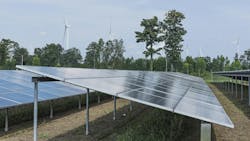New Report Highlights Challenges in Forecasting Energy Demand and Distributed Resources
The Energy Systems Integration Group (ESIG) has released a report examining how utilities and planners forecast long-term electricity demand and distributed energy resources (DERs) in an era of rapid grid transformation.
The report, Long-Term Load and DER Forecasting, points to major shifts in the energy landscape—driven by electrification of buildings and transportation, the rise of data centers and manufacturing loads, and widespread adoption of customer-sited solar, batteries, and electric vehicles—that are complicating traditional forecasting methods.
“Load forecasting has been rapidly evolving, first with the adoption of distributed energy resources, and then increased electrification of heat and transport, and today with the rapid growth of large loads such as data centers,” said Debra Lew, ESIG’s executive director. “This report outlines key principles and practices to navigate this complexity.”
Historically, forecasts relied on scaling annual energy use or peak demand. But according to the report, this approach often misses localized adoption patterns of new technologies. More accurate predictions require modeling a range of demand-side factors, including efficiency programs, storage, new business loads, electric vehicle charging, and building electrification.
“The evolving energy landscape demands careful modeling in load and DER forecasting practices as well as the need to study multiple future scenarios,” said Julieta Giraldez of Electric Power Engineers, who chaired the task force that developed the report. She emphasized the importance of aligning forecasts across different entities to reconcile system-level data with local grid needs.
Among the report’s recommendations are adopting high-resolution, hourly forecasts to better reflect the role of weather and DER behavior, and using scenario-based methods that account for drivers such as policy changes and market signals. This approach, the authors argue, allows planners to prepare for a range of possible futures while improving coordination among utilities, system operators, and other stakeholders.
While forecasting challenges are becoming more complex, the report suggests they also open the door to innovation. More granular, scenario-driven approaches could help ensure the grid remains reliable, resilient, and capable of supporting clean energy goals in the decades ahead.
